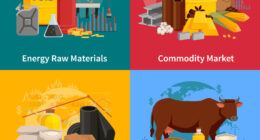A duopoly is a market structure in which there are only two firms or sellers, while an oligopoly is a market structure in which there are a few firms or sellers that dominate the market. The key difference is the number of firms present in the market.
What is a duopoly market?
A duopoly is an oligopoly with only two sellers. The term is also used when there are only two competitors in a particular market. In a duopoly, each firm has the power to influence prices and affect the other’s profits.
What is an oligopoly market?
In an oligopoly market, there are a small number of firms that dominate the market. The barriers to entry are high, and the products offered by the firms are similar. In a duopoly market, there are two firms that dominate the market. The barriers to entry are high, and the products offered by the firms may be similar or different.
In an oligopoly market, there is little competition because there are only a few firms. The dominant firms can influence prices and restrict output in order to maximize their profits. In a duopoly market, there is more competition because there are only two firms. The dominant firms may still influence prices and restrict output, but they must be careful not to lose customers to their competitor.
Differences between duopoly and oligopoly markets
There are several key differences between duopoly and oligopoly markets. For one, a duopoly market is typically dominated by two large firms, while an oligopoly market may have a few large firms or many smaller firms. Additionally, duopolies tend to be more stable than oligopolies, as there is less competition among the two dominant firms. Finally, oligopolies often have higher barriers to entry than duopolies, making it difficult for new firms to enter the market.
What is difference between monopoly oligopoly and duopoly?
(Image by ElasticComputeFarm from Pixabay )


Monopolies, oligopolies and duopolies are all types of market structures where there are a limited number of firms operating. Monopolies are markets with only one firm operating, while oligopolies are markets with a few firms operating. Duopolies are a type of oligopoly where there are only two firms operating in the market.
There are several key differences between these three market structures. Monopolies have complete control over the market and can set prices without any competition. Oligopolies have less control over the market, but can still influence prices due to their limited number. Duopolies have the least amount of control, as there is always competition present between the two firms.
Another key difference is that monopolies tend to be less efficient than both oligopolies and duopolines. This is because they do not face any competition, so there is no incentive for them to be efficient. Oligopolies and duopolines, on the other hand, must be efficient in order to compete with each other.
What is oligopoly market and examples?
An oligopoly market is a market in which there are only a few sellers, and they control the majority of the market share. For example, the automobile industry in the United States is an oligopoly market because there are only a few major automakers. Other examples of oligopoly markets include the airline industry, the petroleum industry, and the pharmaceutical industry.
What is duopoly market and examples?
(Photo by Pixabay )

In a duopoly market, there are only two firms that produce all of the output in the market. In an oligopoly market, there are several firms that produce the output in the market, but a small number of those firms produce most of the output. An example of a duopoly market would be if two companies controlled all of the production of automobiles. An example of an oligopoly market would be if four companies controlled all of the production of computers.
What are the 4 characteristics of oligopoly?
There are four key characteristics of oligopoly:
- Few firms: An oligopoly market structure is defined by the presence of a small number of firms or sellers. The market is dominated by a few large companies, and competition is limited among them.
- High barriers to entry: Oligopolies often have high barriers to entry, which makes it difficult for new firms to enter the market. This can be due to factors such as economies of scale, patents, or high start-up costs.
- Interdependence: Oligopolies firms are interdependent, meaning that the actions of one firm will affect the other firms. For example, one firm may lower prices, which will lead other firms to respond by also lowering prices or by adjusting their marketing strategy.
- Non-price competition: Oligopolies often engage in non-price competition, such as advertising, in order to differentiate their products and gain an advantage over the other firms. This can lead to a costly competition among the firms.
What are the 4 characteristics of duopoly?
Duopoly is a market structure in which only two sellers offer similar or identical products. The four characteristics of duopoly are:
- Two firms: A duopoly market structure is defined by the presence of only two firms or sellers. This means that the market is dominated by two companies, and competition is limited to these two firms.
- High barriers to entry: Duopolies often have high barriers to entry, which makes it difficult for new firms to enter the market. This can be due to factors such as economies of scale, patents, or high start-up costs.
- Interdependence: The two firms in a duopoly market are interdependent, meaning that the actions of one firm will affect the other. For example, one firm may lower prices, which will lead the other firm to respond by also lowering prices.
- Non-price competition: Duopolies often engage in non-price competition, such as advertising, in order to differentiate their products and gain an advantage over the other firm. This can lead to a costly competition between the two firms.
What is oligopoly competition?
Oligopoly is a market structure with a small number of firms, each of which has the power to influence prices and affect competitors. Unlike perfect competition, oligopoly firms are motivated by profits rather than market share. Each firm in an oligopoly competes against the other firms in the market, but there is also cooperation among the firms. The key characteristic of an oligopoly is interdependence. This means that each firm takes into account the actions and reaction of its rivals when making decisions. For example, if one firm raises its prices, the other firms may follow suit in order to stay competitive.
There are several types of oligopoly: Price leader, Duopoly, Cartels, and Collaborative oligopoly.
In a price leader oligopoly, there is one dominant firm that sets prices for the rest of the market.
A duopoly is an oligopoly with only two firms.
Cartels are illegal agreements between firms to fix prices and divide up the market.
Collaborative oligopolies are legal agreements between firms to cooperate in order to compete against larger rivals.
Who explained the duopoly model?
In the early 20th century, duopoly theory was developed by economists including Arthur Cecil Pigou and John Bates Clark. In 1912, Pigou published The Economics of Welfare, in which he introduced the concept of “externalities”. Externalities occur when the production or consumption of a good or service affects third parties not directly involved in the market transaction. Clark’s 1916 book The Distribution of Wealth also analyzed the effects of competition and monopoly on economic efficiency.
In his 1938 book The Theory of Duopoly, Joseph Schumpeter formalized the duopoly model, which is also known as the Cournot–Nash model. In this model, two firms produce identical products using different techniques. Each firm chooses its output so as to maximize its own profit, given the other firm’s output decision. This leads to a Nash equilibrium in which each firm produces half the total output.
While the duopoly model is a useful tool for understanding how two firms can interact in a market, it is important to remember that real-world markets are often much more complex than this simple model assumes. There are many different types of oligopolistic markets, and businesses must constantly adapt their strategies to stay competitive.
What are some oligopoly companies?
Some oligopoly companies in the United States include AT&T, Verizon, Comcast, and Time Warner Cable. These companies are all in the business of providing telecommunications services, and they all have a large share of the market.
These companies have a lot of power in the market because they can set prices and terms without much competition. They often cooperate with each other instead of competing, which can make it difficult for new companies to enter the market.
How much market share is a duopoly?
In a duopoly market, there are only two firms competing against each other. This can lead to a lot of advantages for the two companies, such as being able to control prices and engage in collusion. However, duopolies can also lead to disadvantages, such as less innovation and less competition.
What are the types of monopoly?
Pure monopoly: A monopolist firm is the only producer in the market for a good or service. There are no close substitutes for the good or service that the monopolist produces, and entry into the market by other firms is blocked.
Monopolistic competition: Monopolistic competition is a market structure characterized by many firms producing differentiated products (i.e., non-homogeneous products) and each firm having some degree of control over price.
Oligopoly: An oligopoly is a market structure in which there are only a few firms producing a homogeneous or differentiated product. The key feature of an oligopoly is that there are barriers to entry into the market for the product produced by the firms in the oligopoly.
Duopoly: A duopoly is a specific type of oligopoly where there are only two firms producing a particular good or service.
What is the main difference between the Cournot and Bertrand oligopoly models?
The main difference between the Cournot and Bertrand oligopoly models is that in the Cournot model, firms produce a quantity of output that they then sell at a market-determined price, while in the Bertrand model, firms compete on price and each firm sells whatever quantity it produces at its chosen price.
Featured Image By – Photo by Nathália Rosa on Unsplash







